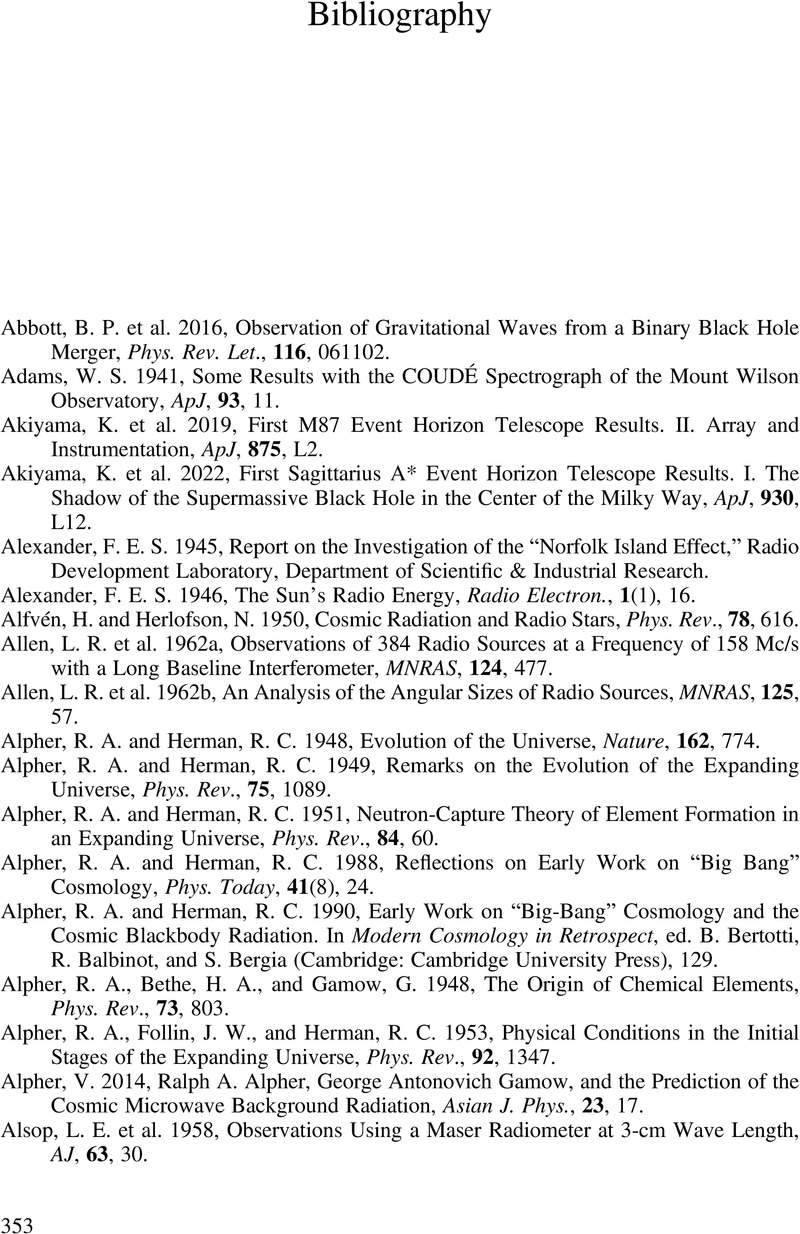Book contents
- Star Noise
- Star Noise
- Copyright page
- Epigraph
- Contents
- Foreword
- Preface
- Introduction
- 1 A New Window on the Universe
- 2 Radio Emission from the Sun and Stars
- 3 Radio Galaxies
- 4 Quasars and AGN
- 5 Radio Astronomy, Cosmology, and Cosmic Evolution
- 6 The Cosmic Microwave Background
- 7 Interplanetary Scintillations, Pulsars, Neutron Stars, and Fast Radio Bursts
- 8 Interstellar Atoms, Molecules, and Cosmic Masers
- 9 Radio Studies of the Moon and Planets
- 10 Testing Gravity
- 11 If You Build It, They Will Come
- 12 Expecting the Unexpected
- Notes
- Glossary: Abbreviations and Acronyms
- Journal Abbreviations Used
- Bibliography
- Suggested Reading
- Index
- References
Bibliography
Published online by Cambridge University Press: 04 May 2023
- Star Noise
- Star Noise
- Copyright page
- Epigraph
- Contents
- Foreword
- Preface
- Introduction
- 1 A New Window on the Universe
- 2 Radio Emission from the Sun and Stars
- 3 Radio Galaxies
- 4 Quasars and AGN
- 5 Radio Astronomy, Cosmology, and Cosmic Evolution
- 6 The Cosmic Microwave Background
- 7 Interplanetary Scintillations, Pulsars, Neutron Stars, and Fast Radio Bursts
- 8 Interstellar Atoms, Molecules, and Cosmic Masers
- 9 Radio Studies of the Moon and Planets
- 10 Testing Gravity
- 11 If You Build It, They Will Come
- 12 Expecting the Unexpected
- Notes
- Glossary: Abbreviations and Acronyms
- Journal Abbreviations Used
- Bibliography
- Suggested Reading
- Index
- References
Summary

- Type
- Chapter
- Information
- Star Noise: Discovering the Radio Universe , pp. 353 - 387Publisher: Cambridge University PressPrint publication year: 2023



